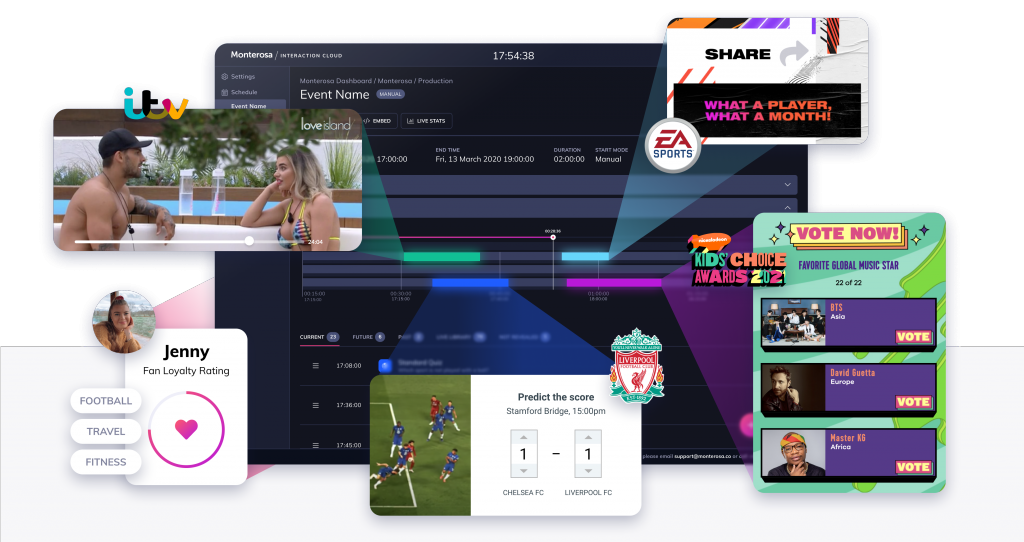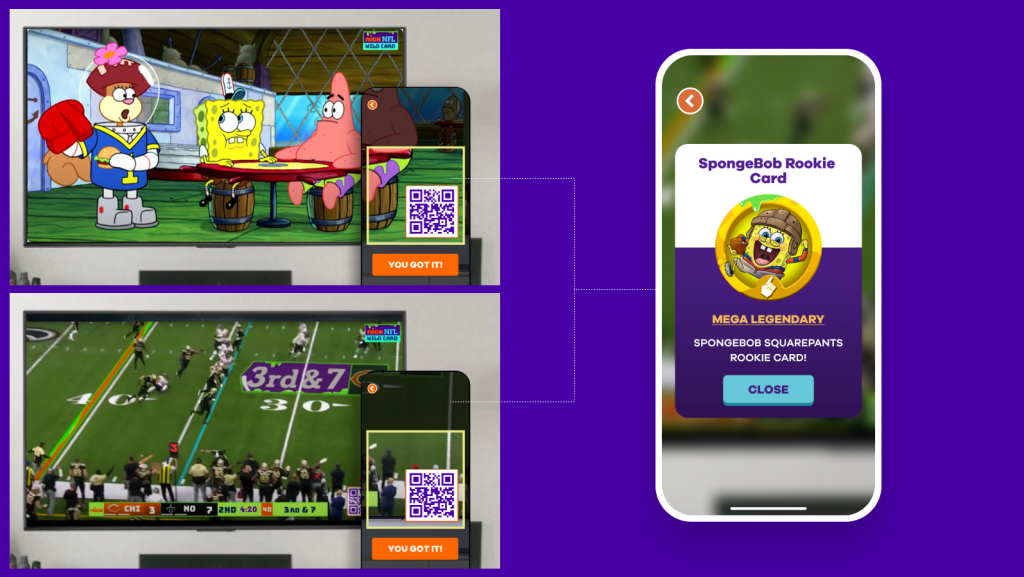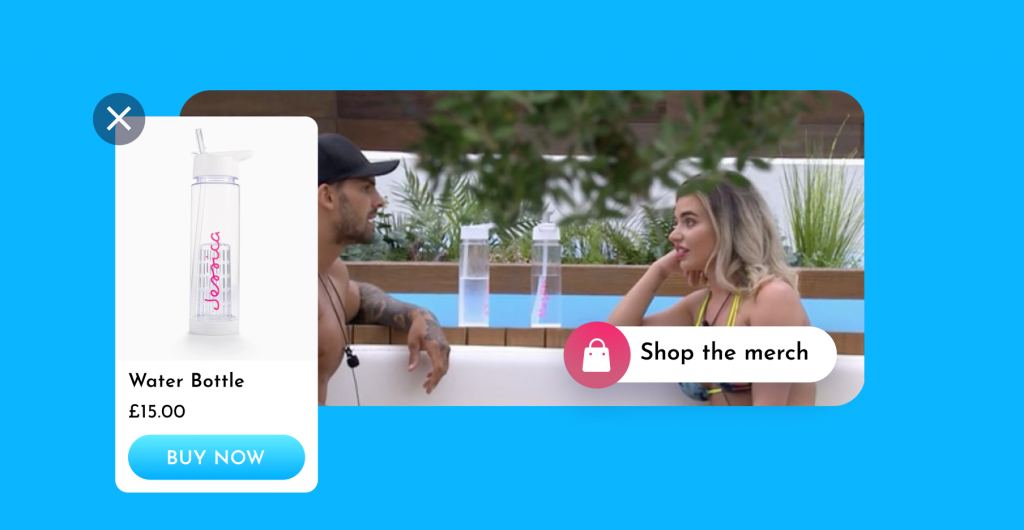
After more than 40 years of operation, DTVE is closing its doors and our website will no longer be updated daily. Thank you for all of your support.
Real-time Engagement: The new frontier for OTT platforms and differentiation
For a long time, media companies have known that direct-to-consumer (D2C) business models are vital to future-proofing their businesses. With this in mind, many companies have spent years of development— both outsourced and in-house— building their own platforms that are often worthy Netflix clones. But this does little to solve the real problem.
With the increased relevance of D2C models caused by the pandemic, we are now in a more crowded landscape. Attracting and retaining audiences becomes more challenging, and differentiation becomes an essential component of success.
If a digital platform is essentially a clone, then exclusive content is the only differentiator. But with more high-quality content available than ever before, hanging your hat on content alone to set you apart is a limiting play. It’s time to consider creating a user experience as unique and exclusive as the content itself.
At Monterosa, we’ve seen how applying Real-time Engagement (RTE) to digital properties can create experiences with personality. We’ve partnered with media companies and broadcasters to utilise the capabilities of connected, interactive platforms to create experiences that are unique to their content types. Deeply engaged digital audiences have propelled entertainment hits like Love Island and Got Talent, and fantasy leagues have driven the ongoing engagement of sports fans worldwide.
If you’re new to the idea of RTE, we define it as dynamic interactivity that increases user attention and loyalty. Common themes include participation, interactivity, gamification, and augmenting pure video experience with layers of live sports data or social commentary.

As a broadcaster looking to strengthen an OTT offering, you may deploy RTE to influence four primary outcomes:
- Attracting new audiences
- Converting trial audiences to subscribers or fully registered users
- Keeping existing audiences engaged over time
- Creating new revenue generation opportunities via direct e-commerce
- Attracting new audiences
Digital entertainment brands are not just competing with each other— the competition is with all the other things on offer in life. That includes the new PS5, YouTube workouts— for some people, it might even be Tinder!
While not all of those alternatives are two-way, social and interactive, most are. Younger audiences, in particular, are accustomed to real-time engagement as a way of life. Look no further than the success of TikTok, Snapchat, Instagram or Discord for evidence.
While passive viewership has a valuable place in our lives, creating ways to ‘lean forward’ increases the likelihood of building a long-term connection with them. For example:
- A user who predicts the final score of a game before it starts builds emotional investment in the outcome.
- When someone opts to play along with a game show, they’re proven to stay longer than those who don’t. (They want to finish and get their score!)
- When someone enjoys the debate with other fans, they stay interested even during the boring bits.
These outcomes correlate with commercial benefits that can combat subscription fatigue, increase loyalty and even bring back lapsed subscribers to try something new.
- Converting trial audiences to subscribers or permanently registered users
Someone who participated in a trial, or is on a free tier, is more likely to convert than a fresh user. However, marketing reminders and ongoing email communication is likely to be irritating. Worse still, you’ll get blocked or moved into the spam folder.
Rather than coming up with different ways to say “come back and subscribe”, you can use real-time engagement to provide a compelling, urgent reason to come back that feels natural and valuable to the user. For example:
- Join the pre-event debate with our interactive live stream
- Predict which team will triumph and win a prize
- Play along with our interactive game show and test your knowledge
If you’re operating via an app, you can use push notifications that cut through by offering value. Then by connecting the rewarding activity to an onward value-generating journey such as “Subscribe Now” or “Buy Now”, you can get lapsed users, trial users and others back into your funnel without even advertising to them and without being irritating.
If you get it right, your free proposition can become a magnet for community engagement. With fans participating and building a sense of togetherness, your digital experience becomes a top-of-mind source of entertainment, information or community interaction. And then, they’re one step closer to conversion.
- Keeping existing audiences engaged over time
Sporting events, TV shows and other time-relevant properties all suffer from a problem – they come, and they go. Sure, you can get access in an on-demand environment, but once you’ve watched something, what next?
Those who participate typically become more emotionally invested than those who are passive. They are more likely to develop loyalty to the brand. And unsurprisingly, loyal users tend to convert at a much higher rate. But that loyalty must be earned.
One way to start is to adopt gamification mechanisms – incentivising audiences to participate, creating a feeling of emotional satisfaction that can lead to long-term retention.
For example, Nickelodeon uses a gamified rewards mechanic with QR codes to keep audiences coming back. A QR code is displayed during the TV show, and they encourage audiences to “capture the code” with the mobile app and to win virtual rewards.
The user is transitioned from the core content to the app where they participate in games, trivia, and community features. By gamifying consumption, this broadcaster stretches engagement way beyond the period of the show itself. By creating touchpoints beyond the content itself, they keep users returning and encourage continued viewership.
- Creating new revenue generation opportunities via direct ecommerce
Most entertainment and sport franchises have associated products and services – merchandise, event tickets and streaming subscriptions for instance.
While storefronts for those products have long-since existed in their own locations, a lot has changed since the traditional online store was conceived. Now, we have impulse purchasing, payments activated by facial recognition, and entirely new behaviours such as “Live Commerce” blending streaming with online shopping.
By bringing people into entertaining, enjoyable environments, you can now encourage them to discover and complete a purchasing journey at once, and in-situ. The concept of “advertising” becomes outmoded and instead you’re seamlessly integrating a buying journey into the experience.
To make this work is, to some extent, a numbers game – you need volume. But you also need great timing and relevance.
As an example, using Monterosa / Interaction Cloud, ITV seamlessly integrates purchasing into catch-up VOD clips within the Love Island app. The resulting conversions are far higher than via traditional digital advertising methods.
To conclude: as attention becomes even more limited, and in a competitive market, audiences will make their choices and be drawn to the best digital experiences. To ensure your proposition succeeds, give people more of what they love and build compelling connections.
Get in touch to demo the platform!
This is sponsored content




